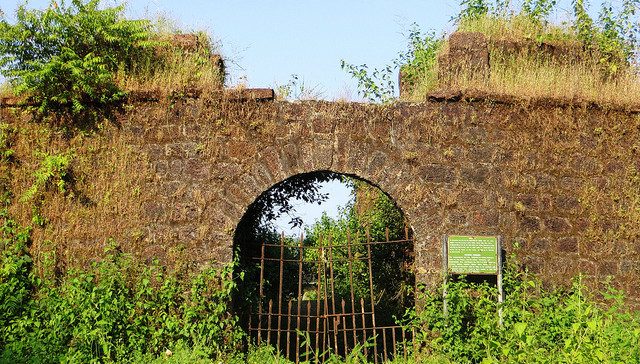Goa is a land of many surprises. It’s approximately 105 kilometres of coastline with some of the most beautiful beaches in the country isn’t the only reason that people come to visit. There’s the food, the nightlife and shopping as well to a certain extent. And being so rich in history and heritage, another thing that the state is also famous for is the number of forts in the region thanks to the influence of the Portuguese. The Alorna fort is one such fort among many.
The history of Alorna Fort
Not much is known about the Alorna fort in Pernem taluka in North Goa. It is located in the village of Alorna, which is approximately 30 kilometres from the city of Mapusa.
The fort is over 200 years old and was constructed sometime in the 17th century by the Bhonsles from Sawantwadi. It has been under the rule of different leaders since it was built.
Alorna fort was built with major defence mechanisms in order to withstand the invasions by the Marathas from the north. The fort was invaded and captured by Marquis of Castello Novo who was later known as Marquis of Alorna. It remained in his possession till 1746 and was subsequently captured by Dom Frederico Guilherme de Souza in the name of the Portuguese in 1781. The Portuguese then took advantage of the fort’s location to protect themselves from the Maratha invasions in the North.There used to be 4 gun barracks but today, only 2 can be seen
The Directorate of Archives and Archaeology’s restoration plans
Now the fort is in complete ruins with the vegetation running wild. There is nothing remaining in the fort to show its violent and bloody history. The great news is that the Directorate of Archives and Archaeology has major plans to restore the fort. This is similar to what has been done with the Reis Magos Fort in Nerul.
An article in the TOI stated that even though there was a conservation effort a decade ago, lack of periodic maintenance resulted in the Alorna fort falling into complete ruins. Goa’s monsoons each year further impacted the structure and parts of it collapsed with post-monsoon vegetation further accelerating the decay. This worried heritage lovers and local residents. The Alorna panchayat has been petitioning the government to restore the fort. Chief minister Manohar Parrikar had assured the Goa assembly in August 2013 of a conservation project to restore it. A project was mooted more than a year ago, but got entangled in the code of conduct for the assembly and panchayat polls, said sources.
“We are happy that its conservation will be taken up,” said Prajal Sakhardande, president, Goa heritage action group (GHAG), adding that the conservation should be followed by regular upkeep and maintenance.
The hope that this fort gets the well-deserved restoration is high since it’s part of Goa’s extensive heritage and is also located in one of the quietest, most remote, idyllic and peaceful places in the state.
ItsGoa/NOV/KDGP


